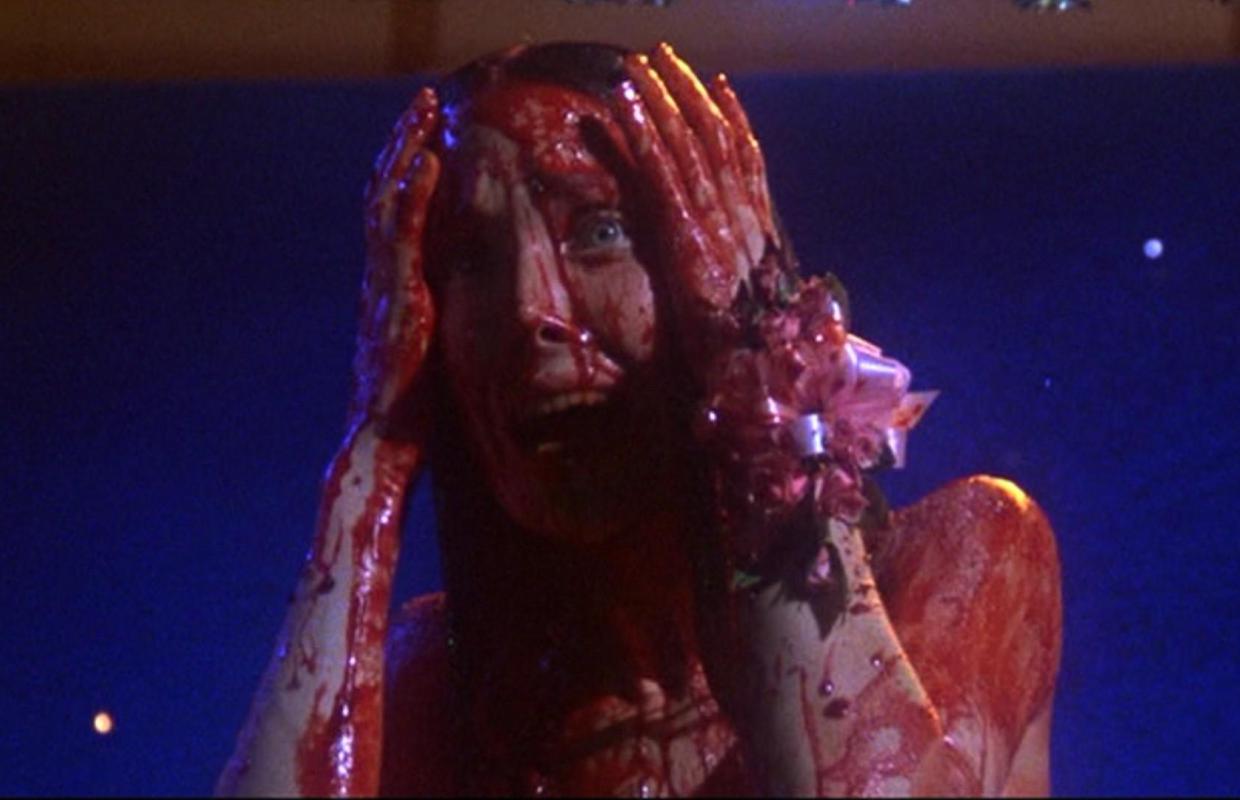It’s been 40 years since the 1976 version of Stephen King’s Carrie. In The Middle considers how the representation of this cult figure has changed since the film originally showed.
The original version of Carrie (1976), directed by Brian De Palma, features a predominantly blond cast and a Carrie White who is characteristically timid, unsociable, and loathe to rearrange her ratty blonde hair from her equally ratty face. Played by Sissy Spacek, this adaptation of Steven King’s novel presents Carrie as the lurking, awkward girl that most will begrudgingly recognise from previous school experiences. Interestingly, the discovery of her powers doesn’t alter her behaviour or her negative perception of herself, but of course being asked by ‘dreamy’ Tommy Ross (William Katt) does. Combined with an unnecessarily sexualised shower scene at the beginning after some arduous exercise (excluding Carrie who remains on the side-lines), and superfluous intimate shots of young naked girls, the 1976 version verges on a feminist’s nightmare.
‘an unnecessarily sexualised shower scene at the beginning after some arduous exercise… and superfluous intimate shots of young naked girls, the 1976 version verges on a feminist’s nightmare’
Regardless of untold power, Carrie remains a mousy, almost limp character throughout most of the film. Even in the dramatic scene at the end where Chris Hargensen (Nancy Allen) and her boyfriend Billy Nolan (John Travolta), douse her in pig’s blood, Carrie remains motionless and almost apathetic as she murders her peers. Carrie’s representation in regards to her relationship with her fanatically devout mother (Piper Laurie) is also notable; while Carrie begins to develop some mettle to challenge her mother’s preaching and attend prom with Tommy, it’s still clumsy and fragile. Even after being literally stabbed in the back by her mother, it only results in pained squeaking before almost accidentally killing the mum with sharp kitchen utensils. Carrie then returns to cowering in the corner and whimpering over her mother’s body as the house crushes them.
The 2013 version however, is remarkably divergent while retaining the original storyline, and even some of the dialogue. The use of ‘dirty pillows’ is perhaps the most haunting remnant of 1976. In this version Carrie (Chloë Grace Moretz), is still represented as a nervous social recluse, but has an undercurrent of confidence when talking, and perhaps the starkest difference of all: she explores her powers. In this version, Carrie’s confidence seems to develop as she gains control over her powers. For Spacek’s Carrie, the powers were almost in the background until they were necessary to attend prom and kill everyone. For Moretz they become an integral element to her character. At the climatic prom scene, Carrie wilfully manipulates her powers to slaughter others through electrocution, suffocation, and general crushing. Regarding the representation of Carrie’s relationship with her mother (Julianne Moore), it is more complex. Moore fluctuates between devoted mother and heinous torturer, and while this Carrie exerts more dominance over her, the film still ends with Carrie plastered to her mother’s corpse in sorrow.
‘In this version Carrie (Chloë Grace Moretz), is still represented as a nervous social recluse, but has an undercurrent of confidence when talking, and perhaps the starkest difference of all: she explores her powers’
In summary, the dichotomy of the 1976 version and the 2013 is stark. The contrast in the representation of Carrie is significant, as it highlights how issues of femininity and the influence of societal norms have impacted the role. Thirty-seven years’ difference emphasises how notions of sexuality and issues surrounding women have filtered through to the film through the transformation of Spacek’s Carrie to Moretz’s.
Stephanie Bennett
(Image courtesy of Red Bank Films)

